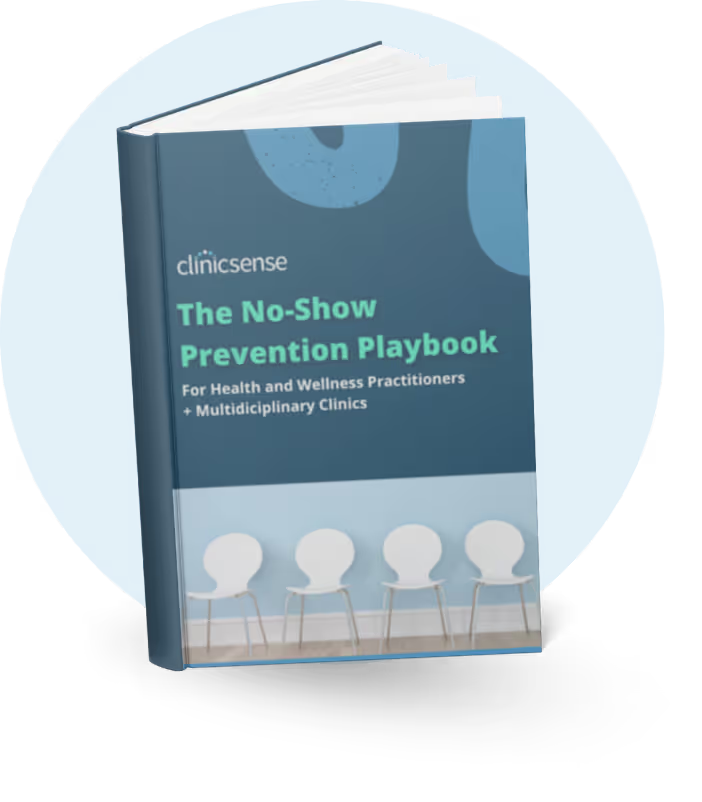Practice Management Tips
June 19, 2023
.avif)
Are you a business owner wondering what pay structure to adopt for your employees? This article explores different pay structures used in the health and wellness industry, from commission-based models to hourly pay, and everything in between. Find out which compensation model is the best fit for your wellness business based on factors such as your stage of growth, business model, and work culture.
There are a variety of pay structures business owners can use to compensate employees. The compensation model used depends on factors such as the nature of the work, business goals, and employee needs and preferences. Health and wellness businesses and sole practitioners have many options available to them.

Many health spas and wellness centers use a commission-based compensation model. Employees get paid a percentage of the total cost of the services they provide. Practitioners are responsible for treating and retaining clients, as well as promoting themselves. That's the extent of their responsibilities in the business.
This type of pay structure works well to motivate employees to provide good service and get clients to rebook with them. When they aren't working with clients, they don't get paid. The downfall of this structure is that as business revenue increases, so does payroll.
Team-based pay structures award employees for performance instead of sales. Employees are paid an hourly wage + team bonuses. This type of compensation model removes the competition that exists in commission-based models. It also doesn't award people for sitting in the breakroom when they're not booked.
Implementing this type of pay structure encourages employees to improve their skills, work together, and create community within the workplace. Not all practitioners will be on board with this pay structure, but those who are will help build your brand.
Larger clinics often pay practitioners an agreed-upon salary, regardless of the number of hours worked. Typically, this compensation model has several pay grades for different levels of practitioners. Employees work their way up to different pay grades through raises over time.
Paying salaries works best with full-time employees. Business owners have set rules around raises and can accurately predict their payroll expenses a year in advance. The downside is you're locked into paying those salaries, even when revenue is down.
Many small outpatient clinics and solo practitioners grow their practice by bringing on independent contractors. Independent contractors are not technically employees. They are self-employed. The business can negotiate a pay structure with the independent contractor, or the independent contractor can simply rent a room from the business.
The benefit of independent contractors is the economy and liability of the arrangement. Independent contractors pay their own taxes and buy their own liability insurance. Plus, you have no long-term obligation to an independent contractor. The downfall is that they have no obligation to you either. They're essentially building their own business within yours.
A common way to pay employees is by the hour. This pay structure compensates employees for the total amount of time worked.
This works well for part-time employees. It is a good option for your front desk staff and cleaning crew. However, it's not common to pay practitioners an hourly wage.
This compensation model is a little different from commission. Instead of getting a percentage of the sale, practitioners are paid a flat rate for every session with a client. It's common for small practices that bring on a specialist to provide a specific service to use this pay structure. For example, a chiropractor may hire a massage therapist to provide a 15-minute massage as part of a patient's chiropractic treatment.
This model works well for simplicity in a setting where the practitioner only provides a single service. However, for clinics that aren't using a cash-based business model, it could mean paying employees for services the clinic isn't reimbursed for if insurance claims are denied.
Some clinics use a hybrid pay structure that includes both an hourly wage and a commission for services rendered. Typically, the base pay compensates employees for their time, and the commissions are smaller than a solely commission-based pay structure. Practitioners are rewarded for retention and paid regardless of revenue.
This compensation model is a good option for slow-growing clinics that are working to get more patients in the clinic. The base pay will help retain practitioners during the slow time and allows the business to keep more of the profits when revenue increases. The downside of this model is having to pay that hourly wage when business is slow.
Tips are common in wellness centers with massage therapists and estheticians. Tips are simply a little extra something clients give practitioners. As a clinic owner, you merely need a system for collecting tips for your employees. This cost the business nothing.
Bonuses are extra compensation from the business. Bonuses are often determined by employee performance, company performance, or tenure. Obviously, budget is a factor too. When the business is doing well, and the employees are doing well, everyone gets rewarded.

Every clinic is different. The size, business model, and type of employees a clinic has will dictate what the best pay structure is. Take into consideration what stage of growth your business is in, what ongoing expenses you can afford, and the work culture you want to create.
When you're a sole practitioner, the compensation method is fairly simple. If you're a sole proprietor, all profits from your business are your income. The same is true if your business is an LLC, unless you file business taxes as a corporation.
As an LLC, you have the option to file two separate sets of taxes. One for your personal income, and one for your business income. This makes you separate entities. If you do this, you can opt to pay yourself a salary or commission. That expense will be a tax deduction for your business, and count as income on your personal taxes.
Every business needs an accounting system to record income and expenses, but tracking individual sales and employee retention is a separate thing. Clinic management software can help you track sales, individual practitioner sales, and retention.
With ClinicSense, clients can book online or in-house. Those appointments, SOAP notes, and even invoices are stored all in one place. You can run sales reports and see who treated whom with just a click of a button. Everything is automated, so it takes no time to crunch the numbers.
The best thing about using clinic management software is it usually requires fewer people to run your business. That means you have fewer employees to pay!


.avif)
.avif)
.avif)









For 14 days